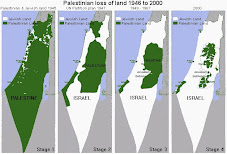Nearly half a million children in Gaza returned to overcrowded and dilapidated schools on 1 February, many attending in a shift system, with missing textbooks, stationery or uniforms.
“I don’t have a school uniform because my Dad doesn’t have a job and said he doesn’t have enough money to buy me one,” said Mohammed al-Khouli, a nine-year-old at the government-run al-Mu'tasem primary school in Gaza City. “I have to borrow pens and pencils from other kids in my class because I don’t have any.”
Israel’s 23-day military offensive on Gaza which ended on 18 January 2009 had “devastating consequences for the education system”, according to a report by the UN Office for the Coordination of Humanitarian Affairs (OCHA).
Some 440,000 students attend 640 schools in Gaza; 383 are government schools, 221 are run by the UN agency for Palestinian refugees (UNRWA) and 36 are private schools, according to the ministry of education and UNRWA.
The OCHA report said at least 280 schools were damaged in the conflict, including 18 that were completely destroyed.
|
The education ministry said none have been rebuilt or repaired because of the Israeli ban on the entry into Gaza of construction materials, which Israel says could be used for military purposes.
The ministry reckons it needs some 25,000 tons of iron bars and 40,000 tons of cement to build 105 new schools to cater for the annual rise in the number of schoolchildren.
“The war had and continues to have a severely negative impact on the entire education system,” Yousef Ibrahim, deputy education minister in Gaza, told IRIN, adding that about 15,000 children from damaged schools had been transferred to other schools for second shifts, thus “significantly shortening class time”.
Ibrahim said many damaged schools in use lacked functioning toilets, water and electricity; classrooms were overcrowded and there were shortages of basic items such as desks, doors, chairs and ink. He said half all students in government schools lacked at least one textbook for coursework this term...
According to the education ministry, 164 students and 12 teachers in its schools were killed in the conflict. UNRWA said 86 children and three teachers were killed in its schools.
“Schoolchildren, thousands of whom lost family members and/or their homes, are still suffering from trauma and anxiety and are in need of psycho-social support and recreational play activities,” said the OCHA report.
Khalid Salim 43, a science teacher at Abu Ja’far al-Mansour preparatory school in north Gaza said it was a struggle to teach children.
“Most of them don’t understand the lessons; they don’t concentrate at all... They forget everything explained in the class. When I give them exams, 80 percent fail. Before the war, just 3 percent failed,” he said. “When they hear Israeli jet planes, the children scream and cry loudly out of fear.” Full story









